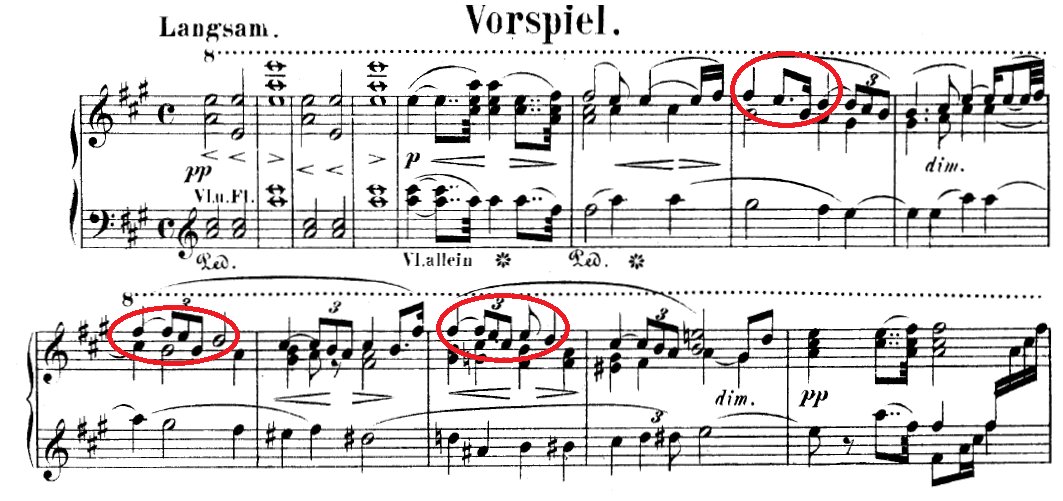
#WednesdayWagner Another immersion into Wagner's compositional procedures! After reviewing 'Rhein', 'Ring', 'Curse', 'Valhalla' and 'Tarnhelm' leitmotifs, let's talk about the 'OBLIGATION' leitmotif, which can is depicted below
#StayHome #COVID19 #TwitterCultural
#StayHome #COVID19 #TwitterCultural

#WednesdayWagner This leitmotif appears in "Die Walküre" when Hunding receives Siegmund and offers hospitality in a "grumpy and forced" mode. Later, it would become the "vote of atonement" between Hagen and Siegfried, but this is another story
#StayHome #COVID19 #TwitterCultural
#StayHome #COVID19 #TwitterCultural
#WednesdayWagner For sure you have noticed that, again, the first 4 pitches ("Question") are the same as the upper voice in 'Ring' leitmotif and the same as in 'Curse' leitmotif, forming a half-disminished chord. See the comparison below:
#StayHome #COVID19 #TwitterCultural
#StayHome #COVID19 #TwitterCultural

#WednesdayWagner After that, the descending scale is the "answer", and it's linked to the "Renunciation" motive (we will come to this another day). Again, the harmony is the key to fully understand the leitmotif
#StayHome #COVID19 #TwitterCultural
#StayHome #COVID19 #TwitterCultural

#WednesdayWagner "Question" is based on IV-II7 chords (Subdominant both of them), while "Answer" is based on V-I chords (Dominant and Tonic)
#StayHome #COVID19 #TwitterCultural
#StayHome #COVID19 #TwitterCultural

#WednesdayWagner The key for Wagner, as in all leitmotifs with half-dism. chord, is the great expectation generated, since it can be Subdominant, Dominant or even Tonic! After this pause (D pitch), we don't know what is going to happen
#StayHome #COVID19 #TwitterCultural
#StayHome #COVID19 #TwitterCultural

#WednesdayWagner Since this leitmotif reflects the "obligation" of Hunding, the harmony feels "obligated" to resolve in an scholastic way: considering half-disminished chord as II7 (minor mode) thus leading to V-I in this mode
#StayHome #COVID19 #TwitterCultural
#StayHome #COVID19 #TwitterCultural

#WednesdayWagner Finally, since it is related to Ring and Curse leitmotifs, Wagner tells us that the own Ring carries the Curse and also the obligation to do certain things. Everything is connected, but treated in different compositional ways!
#StayHome #COVID19 #TwitterCultural
#StayHome #COVID19 #TwitterCultural
@threadreaderapp unroll
• • •
Missing some Tweet in this thread? You can try to
force a refresh







